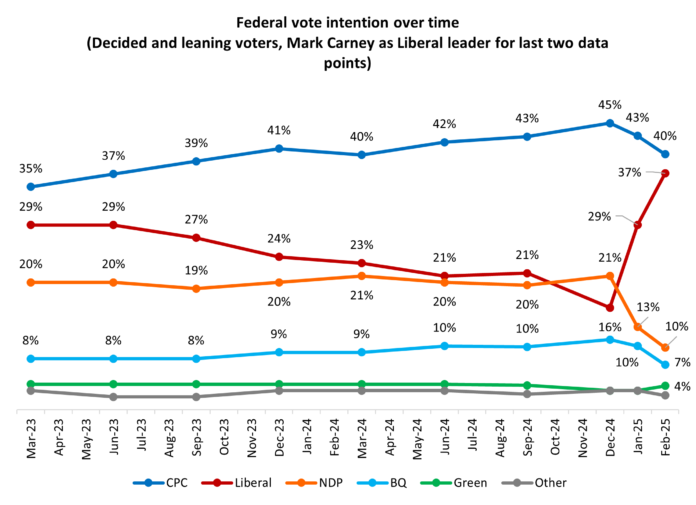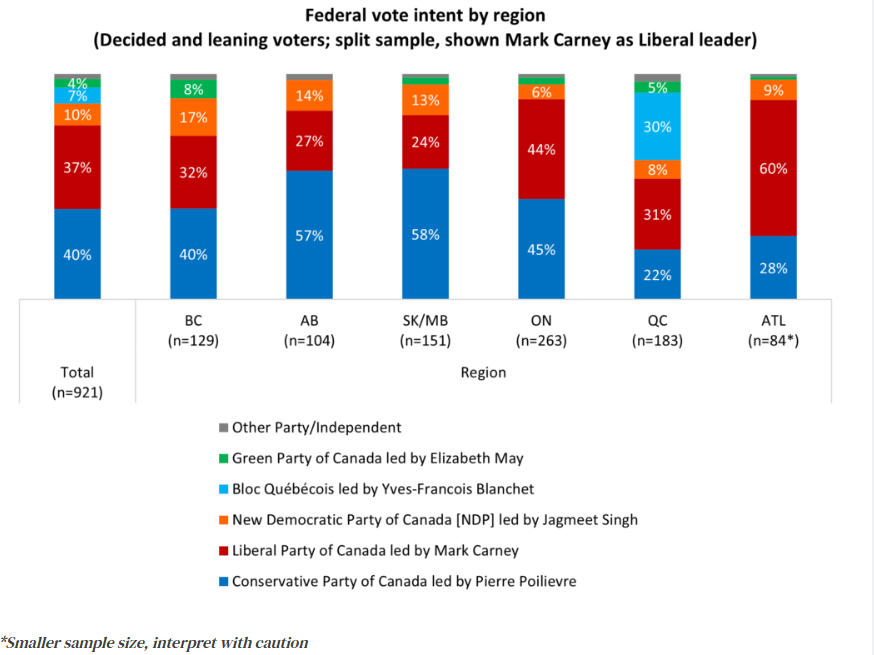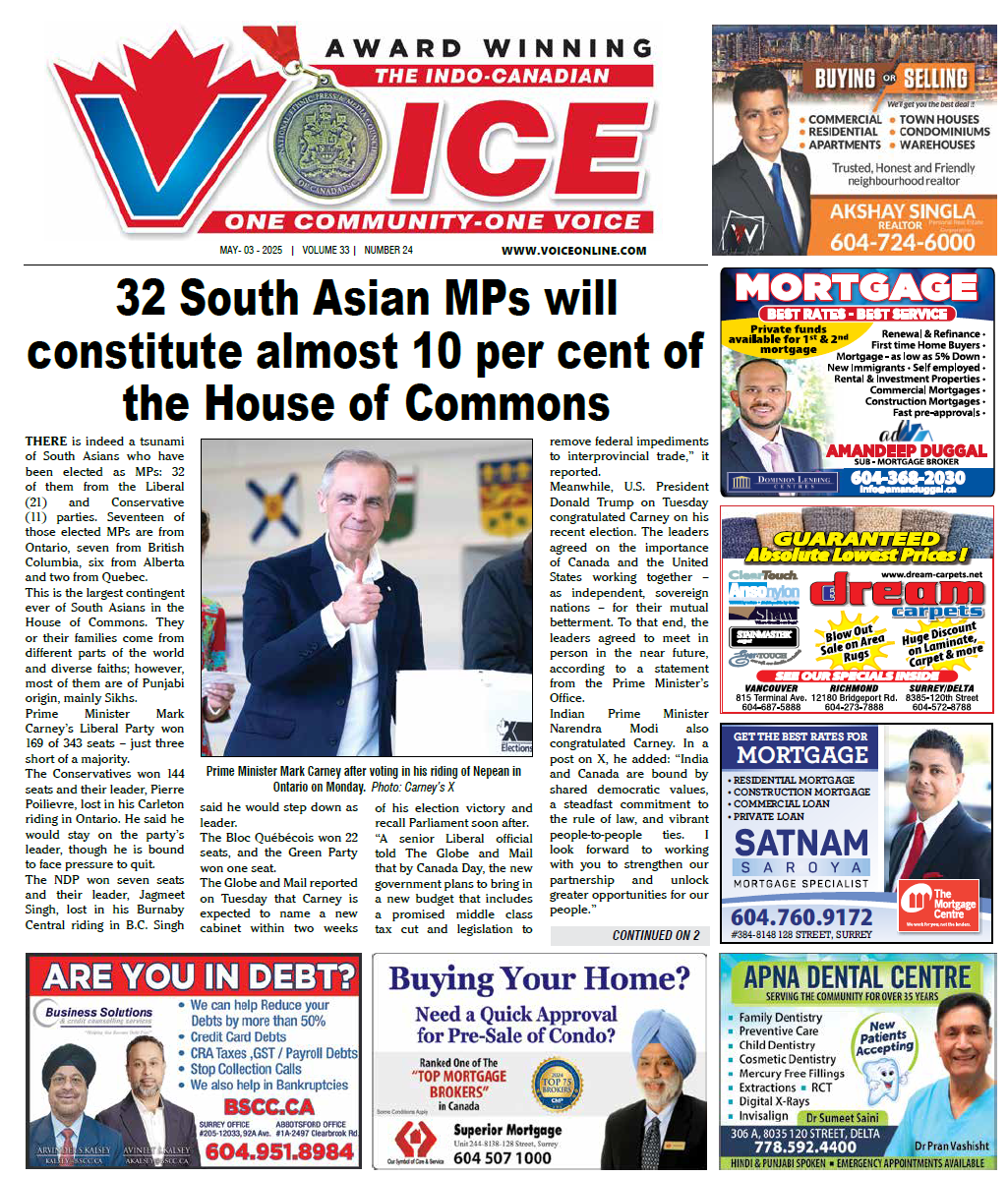Yet another poll shows that with Carney as leader, the gap between the Liberals and Conservatives tightens dramatically
NEW data from the non-profit Angus Reid Institute finds former Bank of Canada Governor Mark Carney surging as the hypothetical leader of the Liberals. With Carney at the head of the party, vote intention has tightened to a three-point gap between the Liberals and Conservatives, with 40 per cent supporting the latter and 37 per cent the former.
This, seemingly at the cost of the New Democrats, who have lost half of their vote intention (21% to 10%) since late December. Under Carney, 42 per cent of 2021 NDP voters say they would support the Liberals, while 44 per cent would vote for the party again.
With Carney’s biggest rival in the race, former Minister of Finance Chrystia Freeland as hypothetical leader, the NDP garners 16 per cent of vote intention instead of 10, and the Liberals drop from 37 per cent to 29 per cent.
This disparity is partially explained by several factors. Carney performs significantly better as Liberal leader when facing off against the other parties and leaders on top issues. He and CPC leader Pierre Poilievre are statistically tied as best to handle the economy, the cost of living, and the U.S. threat, when Canadians are asked to choose between the three major federal parties. With Freeland in place, Poilievre leads on the economy and cost of living, while Freeland and Poilievre are tied on U.S. relations.
Further, on net favourability (favourable minus unfavourable views), Carney scores a +70 among 2021 Liberal voters, a +43 among past NDP voters, and a +42 among past BQ voters. Freeland receives positive scores among all three, but at far lower levels (+18 Liberal, +4 NDP, +28 BQ).
IN the hypothetical scenario with Carney as leader, the Liberals perform strongly in Ontario and Quebec, where they are in a statistical tie in vote intention with the CPC and BQ respectively.
Freeland cedes ground in Ontario and Quebec to those two parties respectively when voters are presented with her as leader (see detailed tables). The Freeland Liberals also perform worse in Alberta (17% Liberal) compared to the Carney Liberals (27%).
The two leaders generate the same support in Saskatchewan/Manitoba (24%), but neither potential leader makes much headway into the massive CPC lead in the Prairies.
In both hypotheticals, the CPC lead in B.C. (Carney: CPC +8; Freeland: CPC +15). While the NDP support shrinks overall in the Carney leadership scenario, it is at similar levels in B.C. under both Carney (17% NDP) and Freeland (18% NDP).
More Key Findings:
- With Carney as hypothetical Liberal leader, vote intention in Ontario is tied (45% CPC, 44% Liberal). In Quebec, the Liberals split evenly with the Bloc Québécois (31% Liberal, 30% BQ) and lead the CPC by nine points.
- Poilievre has seen his unfavourable views rise to their highest level since taking over the party leadership. He is viewed unfavourably by 56 per cent of Canadians and favourably by 37 per cent.
- NDP leader Jagmeet Singh fares worst among all federal party leaders and hopefuls in net favourability, facing a -25 score. His favourability is positive only among young women.
- The top issues facing Canadians are reported to be the cost of living (52%), health care (39%), and relations with the United States (34%).
The Angus Reid Institute conducted an online survey from February 13-18, 2025 among a representative randomized sample of 2,011 Canadian adults who are members of Angus Reid Forum. For comparison purposes only, a probability sample of this size would carry a margin of error of +/- 1.5 percentage points, 19 times out of 20. Discrepancies in or between totals are due to rounding. The survey was self-commissioned and paid for by ARI.














